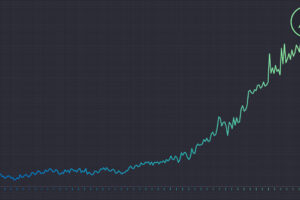This article is the first in a series reviewing recent regulatory developments related to cryptoasset-related issues in the banking sector. Upcoming articles will feature legislative efforts to regulate stablecoins and the authority of banks to engage in cryptoasset-related activities.
On January 20, 2022, the Federal Reserve Board (“FRB”) released its paper on a potential U.S. central bank digital currency (“U.S. CBDC”).[1] This article briefly reviews the FRB’s paper and related subsequent developments in the debate about a potential U.S. CBDC.
As defined by the FRB, a U.S. CBDC would be money used by consumers and businesses that would be a digital liability of the central bank (i.e., central bank money),[2] as opposed to commercial bank deposits, which are not. The only “digital” central bank money used in the United States today is the digital balances held by commercial banks at the Federal Reserve (i.e., reserve balances). The FRB’s paper discussed the risks and benefits of a U.S. CBDC and requested comment on 22 questions; in response, the FRB received over 2,000 comments from a wide range of stakeholders.[3] The FRB plans to publish a summary of the comments in the near future.[4]
As a practical matter, the issuance of a U.S. CBDC may not happen for a number of years, if at all. According to the FRB, the CBDC paper was only the “first step” in a “broad [and essential] consultation with the general public and key stakeholders.” The FRB does not intend to proceed with the issuance of a U.S. CBDC unless there is clear support from the executive branch and Congress, “ideally” through a specific, authorizing law. Moreover, the FRB will only move forward with a U.S. CBDC if doing so is better than the alternatives and the benefits for households, businesses, and the economy at large exceed the risks.
The FRB outlined a number of benefits of having a U.S. CBDC in its paper. First, a U.S. CBDC could safely meet future needs and demands for payment services. A U.S. CBDC could mitigate the risks associated with the proliferation of private digital money while facilitating private-sector innovation for payments and the digital economy. Second, it could streamline cross-border payments (although the FRB noted that these improvements will require significant international coordination). Third, a U.S. CBDC also has the potential to preserve the dominant international role of the U.S. dollar, including the dollar’s status as the world’s reserve currency. Fourth, a U.S. CBDC could promote financial inclusion. Finally, a U.S. CBDC could extend public access to safe, central bank money. Cash use is declining in favor of digital payments, and a U.S. CBDC would be the safest form of a digital asset because it would carry limited credit or liquidity risk.
The FRB also discussed the potential risks and policy issues implicated by a U.S. CBDC. First, changes to the financial sector market structure—the substitution of a CBDC for commercial bank money—ultimately could reduce credit availability or increase credit costs. However, CBDC design choices, such as creating a non-interest-bearing U.S. CBDC or limiting the amount that an end user can hold, could alleviate some of these concerns. Further, there is concern for the safety and stability of the financial system. Because a U.S. CBDC would be the safest form of digital money available, runs on financial firms may be more likely during times of stress. Nonetheless, the FRB noted that the same design choices described above could alleviate this problem as well. Third, the efficacy of monetary policy implementation and interest rate control by the FRB could be impacted as a result of changes to the supply of reserves in the banking system. Moreover, the potential for substantial foreign demand could further complicate monetary policy implementation. The FRB also addressed concerns with privacy, data protection, and the prevention of financial crime. Ensuring that a U.S. CBDC has appropriate defenses against operational disruptions and cybersecurity risks could be particularly difficult because a CBDC network could have more entry points than existing payment services. However, providing for offline capability of the CBDC, if feasible, could enhance operational resilience of the digital payment system.
In June 2022, U.S. Rep. Jim Himes (D-CT, 4th District) published a white paper making the case for a U.S. CBDC.[5] Himes believes a U.S. CBDC will keep U.S. currency and payment systems innovative and competitive and that the potential benefits meaningfully outweigh the risks.[6] Rep. Himes commented and elaborated on many of the issues raised in the FRB’s CBDC paper, including the choice between a wholesale or retail CBDC, architectural decisions (he advocated for using a permissioned semi‑distributed system), account-based wallets, and non-bank participants. More importantly, he explicitly called for Congress to “begin the process of dialogue, education and debate that will lead to draft legislation to authorize further studies, pilot projects, and the possible creation of a U.S.‐issued CBDC.”[7]
FRB Vice Chair Lael Brainard recently made conceptually similar points. Specifically, in a July 8, 2022, speech, she stated that “[a] digital native form of safe central bank money could enhance stability by providing the neutral trusted settlement layer in the future crypto financial system” and that the development of a U.S. CBDC could be a “natural evolution” in payments.[8]
To summarize, the FRB’s paper has brought the discussion of a potential U.S. CBDC to the forefront. While it remains unclear what a U.S. CBDC may look like or when it could be created, the discussion is moving forward, as illustrated by Rep. Himes’s whitepaper and Vice Chair Brainard’s recent remarks.
Money and Payments: The U.S. Dollar in the Age of Digital Transformation, The Board of Governors of the Federal Reserve (January 2022). ↑
The paper briefly discussed the merits of retail versus wholesale CBDCs. The paper focuses mostly on a potential retail U.S. CBDC with banks acting as intermediaries between the FRB and the holder. However, the FRB noted that “narrower-purpose CBDCs could also be developed, such as one designed primarily for large-value institutional payments and not widely available to the public.” Id. at n. 19. ↑
Digital Assets and the Future of Finance: Examining the Benefits and Risks of a U.S. Central Bank Digital Currency, Vice Chair Lael Brainard, Federal Reserve (May 26, 2022). ↑
Id. ↑
Winning The Future of Money: A Proposal For A U.S. Central Bank Digital Currency, Jim Himes, U.S. Congressman (June 2022). ↑
Id. ↑
Id. ↑
Crypto-Assets and Decentralized Finance through a Financial Stability Lens, Vice Chair Lael Brainard, Federal Reserve (July 8, 2022). ↑






